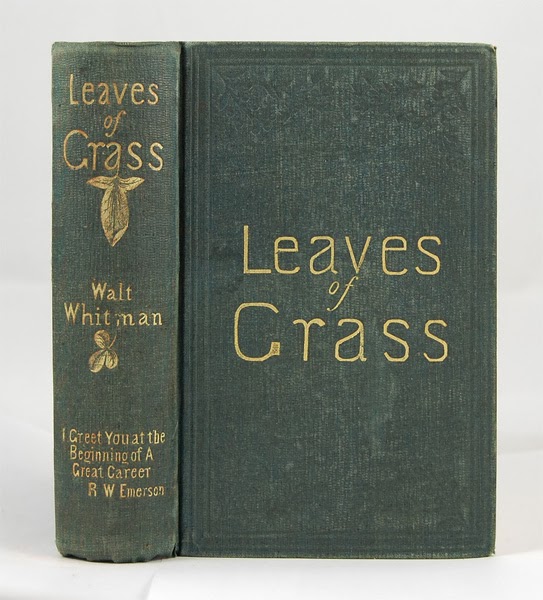I believe when many people think of free verse,
It was shortly after the Romantic period (a revolutionary time in itself, when poets left-off with requisite strict “iambic” lines and began including “substituted feet”) that the next new revolutionary era of “free verse” came into being. Samuel Taylor Coleridge played a large role in this poetic transformation when he originated the idea of poems having what he called an “organic form.” His new idea argued that the form of a poem grew out of the vitality of its content; the “argument” makes the “meter” instead of the meter being “a predetermined form” acting as a “constraint” on the content.
I believe a leaf of grass is no less than the journey work of the stars,
And the pismire is equally perfect, and a grain of sand, and the egg of the wren,
And the tree-toad is a chef-d'oeuvre for the highest,
And the running blackberry would adorn the parlors of heaven,
And the narrowest hinge in my hand puts to scorn all machinery,
And the cow crunching with depress'd head surpasses any statue,
And a mouse is miracle enough to stagger sextillions of infidels.
And the pismire is equally perfect, and a grain of sand, and the egg of the wren,
And the tree-toad is a chef-d'oeuvre for the highest,
And the running blackberry would adorn the parlors of heaven,
And the narrowest hinge in my hand puts to scorn all machinery,
And the cow crunching with depress'd head surpasses any statue,
And a mouse is miracle enough to stagger sextillions of infidels.
- Walt Whitman
And influenced byColeridge ,
Ralph Waldo Emerson Manhattan America
Whitman used poetic techniques such as assonance,
alliteration, antithesis and parallelism, but he did not use enjambment and all
his lines were end-stopped. Algernon Swinburne , along
with poet William
Rosetti London
And influenced by
Upon hearing these words, Whitman said that
the lecture was “one of the richest and most beautiful compositions, both for its
matter and style, we have heard anywhere, at anytime.” He added: “I was simmering, simmering,
simmering.”
Thus, according to Stephen Dobyns Whitman became the first to use the idea of organic form as
a reason for abandoning traditional meters altogether!” In developing the style
of his poems, he was influenced by the rhythmical prose of essayists Emerson and Carlyle , and by the
oratory of preachers he had heard during his childhood, specifically one Quaker
preacher named Elias Hicks. According to Dobyns: “The form Whitman
modified for his uses was the verset, which derives from the King James Version
of the Bible, specifically The Song of
Songs, Psalms, and The Prophets. What replaces the metrical line is “the cadence”
which is a symmetrical balancing of phrase units of similar lengths. The
cadence often appears as an explanation and rationalization for free verse.
I am not blind to the worth of the wonderful gift of "LEAVES OF GRASS." I find it the most extraordinary piece of wit and wisdom that America has yet contributed. I am very happy in reading it, as great power makes us happy. It meets the demand I am always making of what seemed the sterile and stingy nature, as if too much handiwork, or too much lymph in the temperament, were making our western wits fat and mean.
I give you joy of your free and brave thought. I have great joy in it. I find incomparable things said incomparably well, as they must be. I find the courage of treatment which so delights us, and which large perception only can inspire.
I greet you at the beginning of a great career, which yet must have had a long foreground somewhere, for such a start. I rubbed my eyes a little, to see if this sunbeam were no illusion; but the solid sense of the book is a sober certainty. It has the best merits, namely, of fortifying and encouraging … Excerpted from a letter Ralph Waldo Emerson sent to Whitman, thanking him for a copy of Leaves of Grass, July 21, 1855.“Whitman’s enthusiasm and declamatory energy can be seen as influencing poets as diverse as Carl Sandburg, William Carlos Williams, Charles Olson, Frank O’Hara and Gertrude Stein.”


2 comments:
I have been transported! Thank you so much, Liz.
An excellent short statement of the influences that inspired & informed Whitman but your last line is open to question. " Algernon Swinburne, along with poet William Rosetti published the first version of Leaves of Grass in London in February, 1868."
The first version of L of G was self-published in Brooklyn, NY in July. 1855. Darrel Blaine Ford waltwhitmanofli@aol.com
Post a Comment